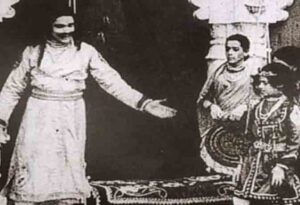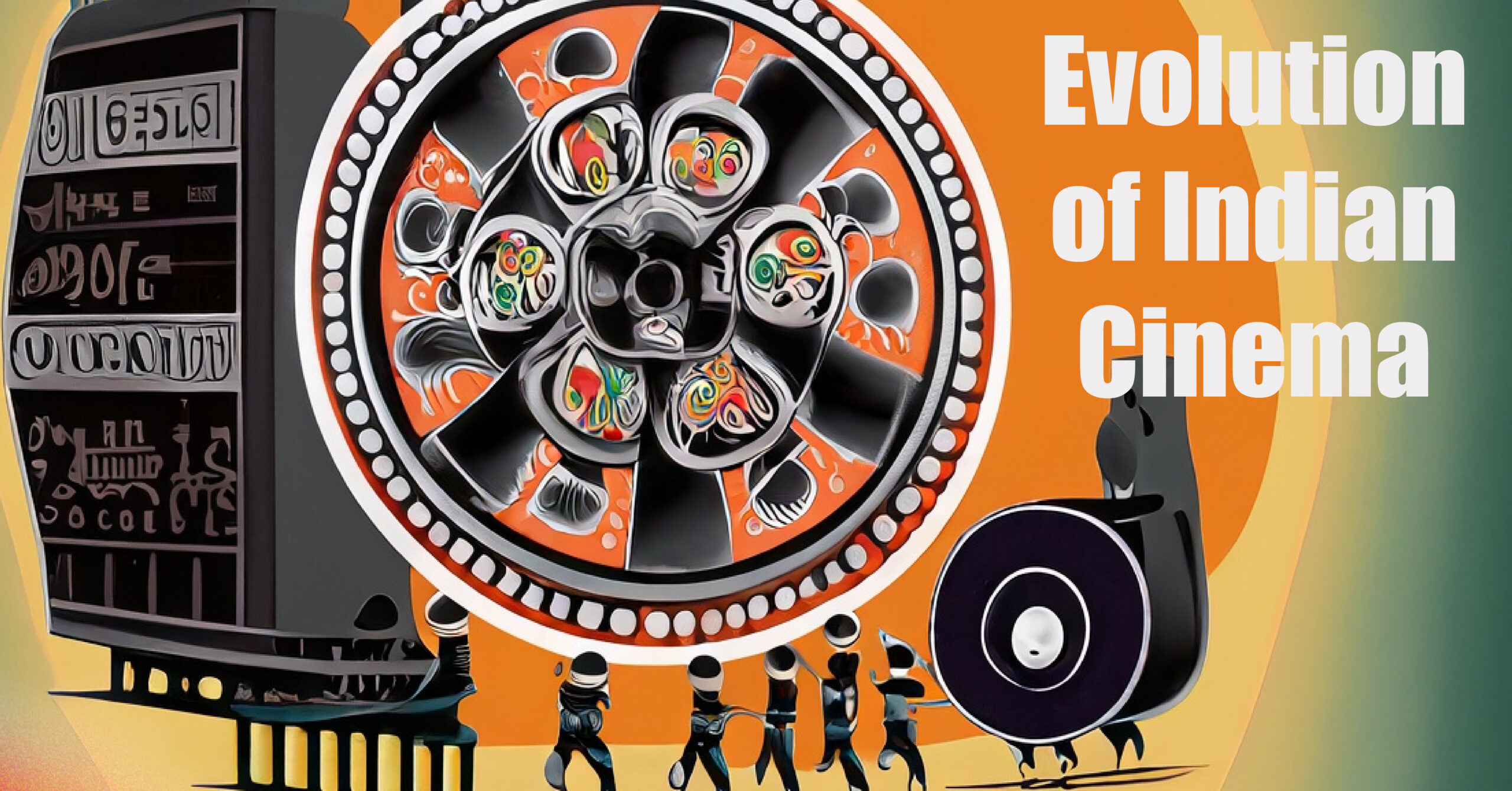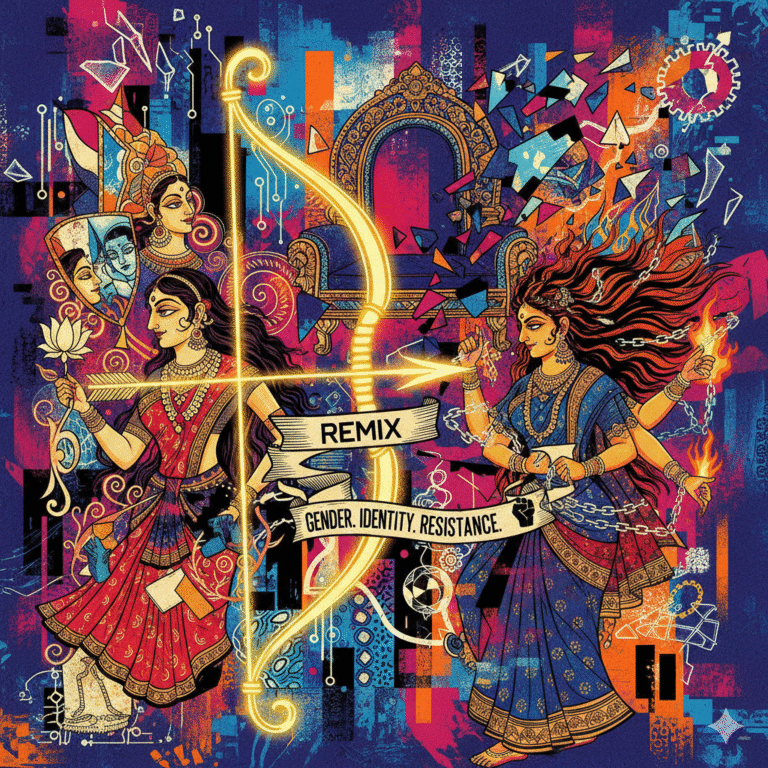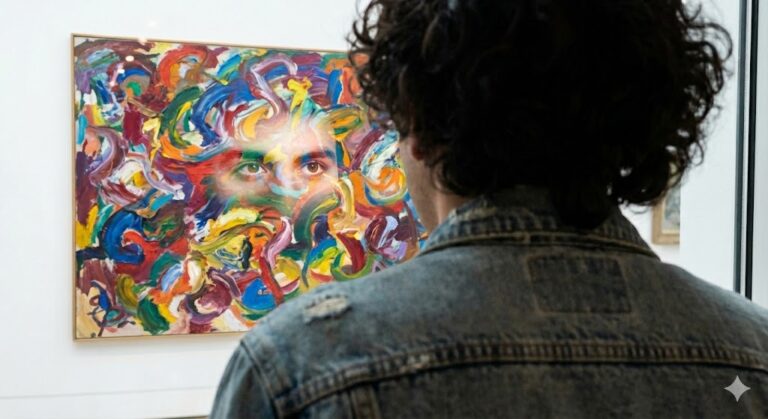We were seated in the 7th and 8th row in a theatre of a small town in India – one row belonged to the mothers, fathers, uncles, and aunts of the family and the other to the children of the family. Here, by children, I don’t mean people below 18 years of age, but people who were born to these mothers and fathers. The film was “Badhai Ho” which boosted veteran actress Neena Gupta’s career and was based on a taboo subject that felt intriguing and threatening at the same time. I say, ‘threatening’ because it threatened the social fabric of Indian society where even talking about sex is frowned upon, and the movie boldly tackled the subject of an older woman (in her 50s) expecting a child, although having two sons already.
Opting for two different rows was a deliberate decision, so that “the children” didn’t have to deal with any awkwardness when there is an adult joke on screen. It was 2018, and filmmakers were choosing bolder concepts and presenting in palatable formats, but had it been a few years before, there was no way that the family could have gone together. But the open discussion after coming out of the movie, made me realize that the generation of mothers, fathers, uncles, and aunts has also evolved over the years, and now, maybe the taboos are finding their way out of the social mores.
This change has not taken place over the night or in the last decade but is a result of 100s of years of exposure to different ideas via cinema and other mediums.

Let’s rewind to the year 1913 when Dadasaheb Phalke showed us what ‘ambition’ can look like on screen. Little did he know that he was starting a revolution in the field of entertainment. He gifted ‘Raja Harishchandra’, India’s first full-length feature film to its citizens. This initiative inspired umpteen artists to take up filmmaking and the results were classics like Alam Ara and Kisam Kanya.
Then came the dawn of “The Golden Era” in India, when Indian theatre and Bengali literature gave rise to parallel cinema. Broadly, the film industry was divided into two categories: movies that portrayed reality on screen and movies with lots of songs and dance numbers to solely entertain the audience. The former one was tagged as art or parallel cinema. The proprietors of art cinema were filmmakers like Ritwik Ghatak, Satyajit Ray, Mrinal Sen, Girish Kasaravalli, Guru Dutt, Shyam Benegal, and Saeed Akhtar Mirza.

If people of the Western world were introduced to Indian films as full of colors, songs, and dance; they also had a rendezvous with the Indian realistic cinema. For instance, Satyajit Ray’s Pather Panchali first premiered at New York’s Museum of Modern Art (MOMA) in 1955 and then later it was released in Kolkata the same year. During the 1960s, the Indian government financed some of the independent films based on Indian themes.
This film, about a family striving hard to survive through every day’s necessities, was a landmark in filmmaking, not only for Bengali cinema but found a connection with the audience globally as well, in festivals such as Cannes.

“I am not conscious of being a humanist. It’s simply that I am interested in human beings. I would imagine that everyone who makes a film is to some extent interested in human beings.” – Satyajit Ray, Purpose Studio
Simultaneously, there were commercial films with songs, dance, and fight sequences. It was the iconic era of Amitabh Bachchan’s “angry young man” Bachchan’s where he portrayed characters that stood against injustices and delivered dialogues that exhibited the spirit of equality among classes. The dialogues mostly written by the duo—Salim Khan and Javed Akhtar, resonated with the audience, and hence, the movies became blockbusters.

The 90s was the era of romance – Shahrukh Khan, Aamir Khan, and Salman Khan; acted in movies where love between the hero and heroin remained the main plot point. Films like ‘Qayamat Se Qayamat Tak’, Hum Dil De Chuke Sanam, Hum Aapke Hain Kaun, Kuch Kuch Hota Hain, and Hum Saath Saath Hain catered to the heart of the audience. I remember my classmates sharing friendship bands when they thought it was the coolest thing to do, after watching Sharukh’s character doing it in ‘Kuch Kuch Hota Hain’. Back then, the number of movies released each year was limited, and hence, the ones that were released made a huge impact on the viewers. Black marketing for movie tickets was still pretty much in vogue.
In the 2000s, Bollywood wooed Westerners towards its flamboyant musical world and influenced the resurgence of American music. The musical romantic drama Moulin Rouge by Baz Luhrmann was influenced by Bollywood (a term used for Hindi cinemas) musicals. The film was a financial and critical success that renewed people’s interest in Western musicals. The trend was followed by films like Dream Girls, Rent, Sweeney Todd, The Phantom of the Opera, Hairspray, Across the Universe and Enchanted.

Economic Legacy
Throughout the 20th century, Indian cinema came to the fore as a global enterprise. The advent of technology made it possible for Indian cinema to reach more than 90 countries. Indian films found their places in international film festivals; along with Indian film celebrities marking their presence in those festivals. Consequently, the industry found an inflow of foreign cash flow with overseas investors finding it a lucrative industry. The production houses such as Sony Pictures, 20th Century Fox, and Warner Bros. collaborated with native production houses to capitalise on the growing industry.
In 2010, it was reported that India ranked first in terms of annual film output. In 2021, India became the global leader in the number of film tickets sold, followed by China and the U.S. This expansion in the last few decades is a result of the open market policy and liberalisation adopted by the Indian government in the 1990s. And India was producing mega-budget films with world-class VFX. The film crew from Mumbai began to frequently film in countries like Canada, Australia, the United Kingdom, New Zealand, and different parts of European; this also increased the global audiences’ interest multi folds into Indian cinema.
The Rise of Multiplexes in India

It was 1997 when India witnessed the release of Shahrukh Khan starrer “Yes Boss” in India’s first multiplex at Saket, New Delhi. The establishment of multiplexes and high-quality digital theatres proved to be a game changer. Firstly, they attracted audiences in the metros, followed by other big cities such as Hyderabad, Ahmedabad, Pune, Indore, Chandigarh, etc. As multiplexes were mostly a part of shopping malls, with high ticket rates, upper-middle-class Indian families were attracted to these exclusive spaces for entertainment.
I remember this time vividly, when suddenly ‘multiplex films’ like Nagesh Kukunoor’s ‘Rockford’ found space amidst the commercial romantic releases. While my schoolmates were singing, “A B C D” from “Hum Saath Saath Hain”, there were also a few who were bonding over the tunes of “Yaaron Dosti Badi hi Haseen” from Rockford – a boy’s story who tries to adjust in an all-boys boarding school. The concept was unique and refreshing and resonated with the children of that time who didn’t have answers to the raging teenage questions without internet access.
Thus began the era of experimental films like Sudhir Mishra’s ‘Hazaron Khawaishen Aisi’, Anurag Kashyap’s ‘Black Friday’, Anant Balani’s Jogger’s Park, Homi Adjania’s Being Cyrus and so on. By the end of 2005, almost 300 screens mushroomed in about a hundred multiplexes across India.
This has given rise to what has to be known as ‘multiplex’ films which are small-budget experimental films on subjects that are rarely touched on in mainstream cinema. Young directors like Nagesh Kukunoor (Hyderabad Blues, Bollywood Calling and Iqbal), Sudhir Mishra (Hazaron Khawaishen Aisi) and Anurag Kashyap (Black Friday) have been able to make a mark thanks to the multiplex phenomenon. Small low-budget films like Being Cyrus, Mixed Doubles, Joggers Park and other feature films were released in such theatres. At the end of 2005, there were at least 300 screens in around a hundred multiplexes across urban India.
The Paradigm Shift in Film Consumption Over the Last Decade
The last 10 years have completely changed the way films were produced and consumed, Netflix, Amazon and other digital streaming giants are producing never-seen-before content that was previously impossible to create; either due to the Censor Board rules or taboos associated with certain topics. Today viewers have multiple options to choose from, which has increased competition among the platforms. Some are offering subscriptions at cheaper rates and some like ‘Mubi’ are promising exclusive content. Sports channels are also shifting to OTT platforms to make sports accessible to people.
Due to widespread internet availability, the global data suggest that this trend is expected to grow at a CAGR of 14.56% till 2028 In 2022, the consumer expenditure and ad revenue from 0TT reached a ballpark figure of USD120 billion. While in India, the OTT and smart TV market is expected to reach USD 36.97 billion by 2028, which is 44.36% of the total global statistics. This means that potentially we’ll witness the entry of a lot of global players in India, and possibly a change in consumption patterns with the introduction and availability of diverse content.

The OTT platforms are further adapting techniques that cater to the local audience, resulting in increased consumer viewership. Local content resonates with the taste and preferences of the local audiences. A recent example is Kathal starring Sanya Malhotra – the comedy satire based out of a small town. The dialect and behavioral patterns seem familiar to the local audience, as well as bring authenticity to the consumers residing in other states.
This trend became more prominent after the onset of the COVID-19 pandemic, people couldn’t go to the theatres, so theatres came home; films were released on OTTs, boosting the virtual streaming world. It helped the filmmakers to float through the paused-pandemic world.
Not only the OTTs but films targeted for theatrical releases have also changed over the last decade. Mega-budget VFX and action-oriented films with historical or mythological backgrounds scored multiple crores at the box office. For instance, S. S. Rajamouli’s Bahubali I & II focussed strongly on story and execution, and despite being a Telegu film, it was a massive hit all over India. This proves that the fulcrum has moved from star-led movies to story-led movies.

This is also evident from 2023’s first mega-hit “Pathaan” which demonstrated the power of star and story. Pathaan’s success can be quoted as sentimental in India, but the love showered by international reviewers proved that it provided its audience with the right kind of recipe. The over-the-top action film was able to keep the viewers glued to their seats all the time.
In an Indian Express article published on 27th January 2023, we can find the praises showered by International media on Pathaan.
“#PathaanMovie is spectacular. It’s a terrific, gleefully over-the-top action melodrama that delivers everything anyone who follows Indian action movies could want. It’s a little too long, but it’s even better (and even more accessible) than ‘War.’ It’s awesome.”
The Wrap’s Scott Mendelson
‘a daft spy caper’ that is ‘more entertaining than (James) Bond’.
- The Guardian
Diversity On-screen
Over the past decade, we have noticed an increasingly diversified workforce. There are more movies directed by women directors and more stories are being written by highlighting the importance of the female gaze. The women are no longer seen as side characters who are there because they had to exist, rather we see the actual struggles and desires of women that were hidden under the misogyny for ages. Films like Lipstick Under My Burkha showed women talking openly about their sexual desires and highlighted the sexual needs of elderly women. We have films on homophobia, the effects of Caste division in today’s world, and feminism from an individualist’s perspective.
Now, more than ever, there is hope for Indian cinema to move toward the global arena, showcasing its rich culture, story, art, and modern beliefs.








+ There are no comments
Add yours